In our travels around the city of San Francisco, we have come across wonderful examples of architecture.
This temple is said to be one of the first Hindu temples in the Western Hemisphere. Built in 1905 it served as a temple until 1959 when it outgrew the small building and was replaced by a much larger temple a few blocks away. The old temple now serves as the headquarters for the Vedanta Society of Northern California.
According to the Vedanta Society of Northern California:
Vedanta is the source of one of the world’s oldest major living religions, Hinduism. It is based on the philosophical books known as the Upanishads, which form the concluding portions of the ancient Indo-Aryan scriptures, the Vedas. The word “Vedanta” is, in fact, another word for the Upanishads. It means, literally, the end (anta) of the Vedas; it also means the culmination of spiritual knowledge (veda).
The history of the temple begins at the Chicago Worlds Fair in 1893. The fair held a World Parliament of Religions. Swami Vivekananda visited San Francisco after attending the conference. Here, he attracted a good many people to his lectures. They formed the Vedanta Society in 1900.
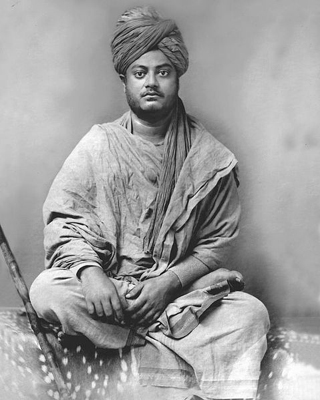
An early pamphlet published by the Society noted that the Temple
“…may be considered a Hindu temple, a Christian church, a Mohammedan mosque and a Hindu …monastery.”
In 1907-08, the temple was topped with four domes and a crenelated tower. On Webster Street, the crenelated tower represents Christianity. On the corner, is the double bulb. This one is patterned after a Hindu temple in the Bengal region of India.
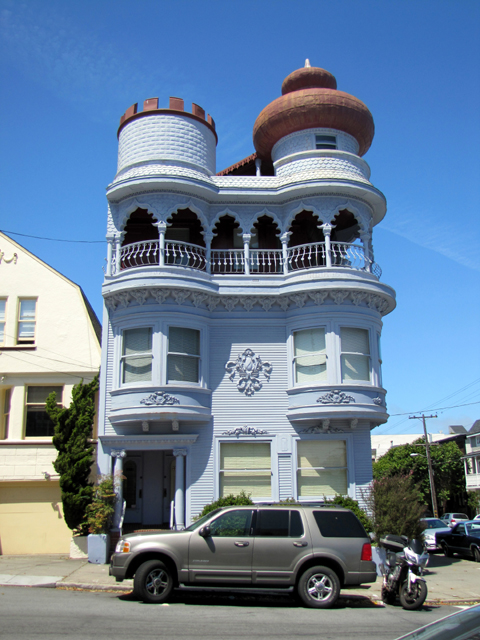
On the Filbert Street side starting on the left (East end), is a two-stage octagon. It’s patterned after a Shivite temple in India. Interestingly, it’s topped with an Islamic crescent, which, in turn, is topped with a trident. The next dome looks like Heshey Kisses. It is a miniature replica of a temple in Benares, India. The dome on the end is a copy of the architecture of the Taj Mahal.
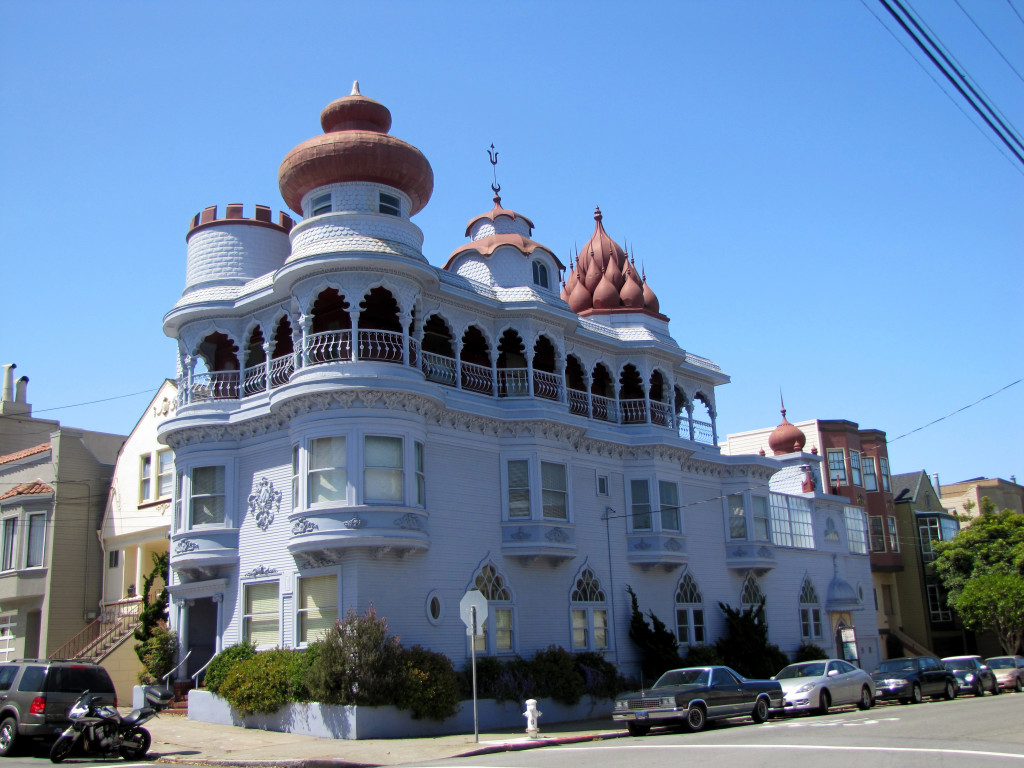
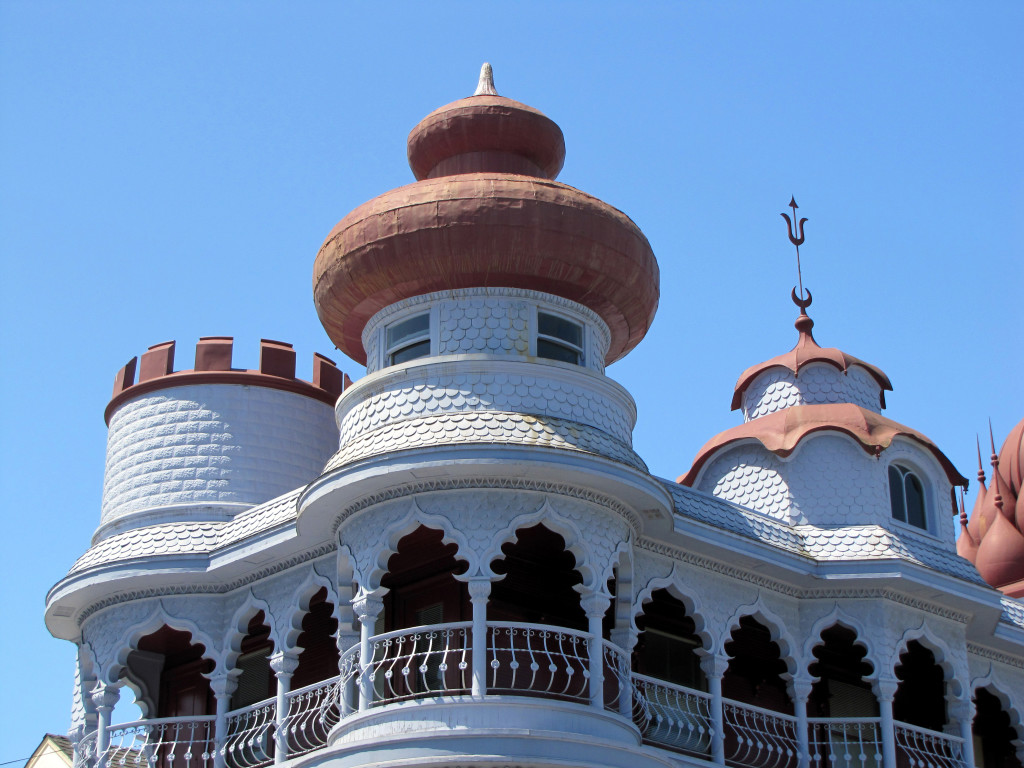

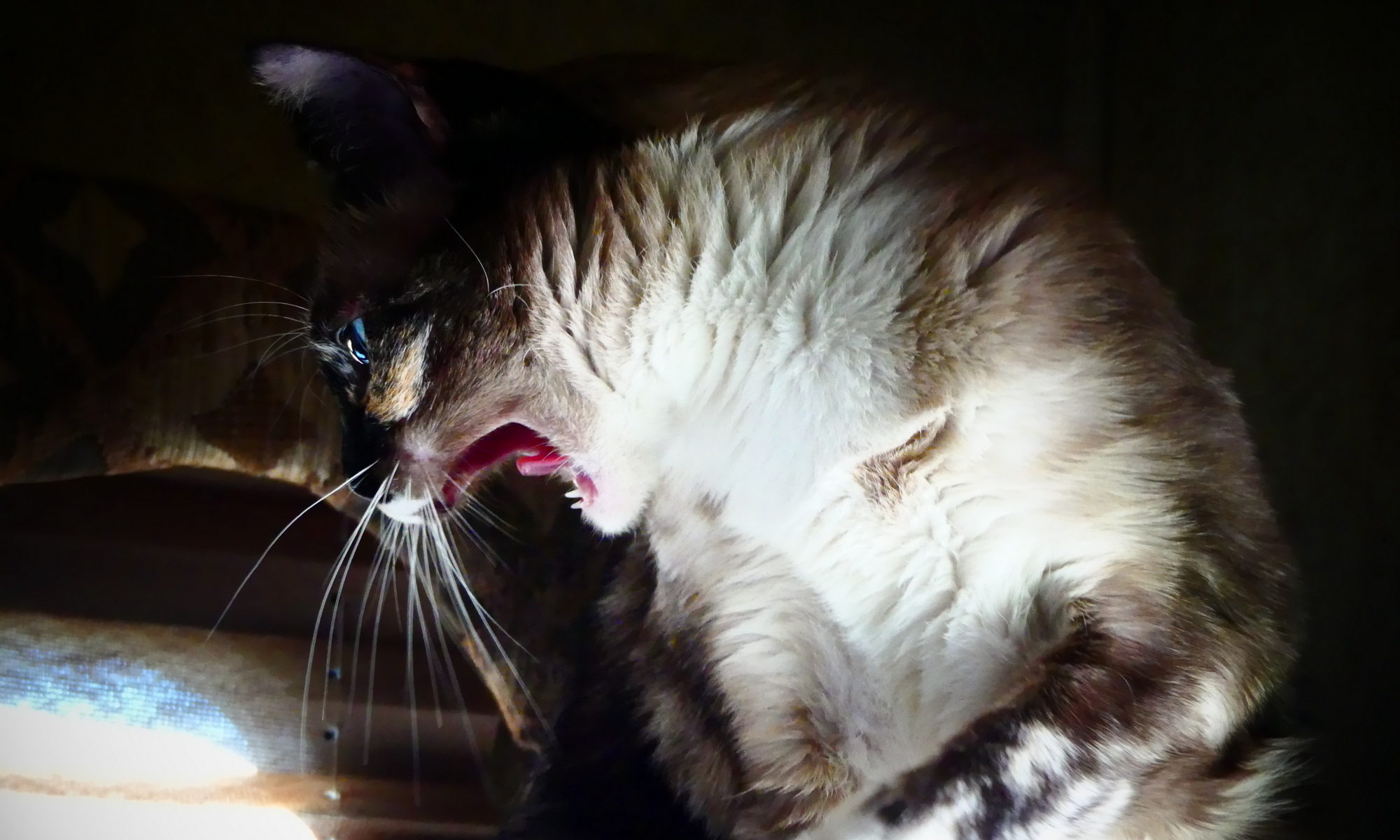


Wow, gorgeous building and pictures
I am an accomplished coppersmith and currently replacing all existing brownish painted galvanized steel roof ornaments and domes with new, exactly duplicated ones made from hand wrought copper.